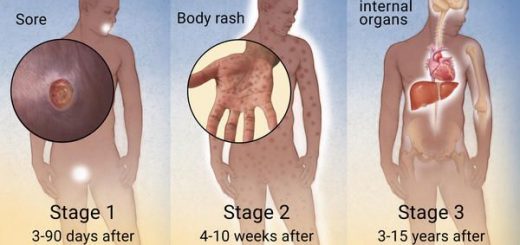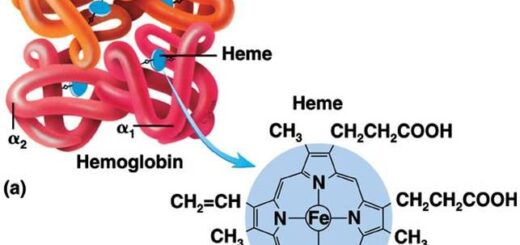Symptoms of hemophilia, Disorders of hemostasis, Thromboembolic and Bleeding
Bleeding disorders are also known as hemorrhagic diathesis, defects in hemostasis can lead to bleeding. They are caused either by platelet disorders (primary hemostasis defect), coagulation defects (secondary hemostasis defect), or, a combination of both. Coagulation defects can be divided into either intrinsic or extrinsic defects according to the specific pathway of the coagulation cascade that is affected. Bleeding disorders can be inherited or acquired.
Disorders of hemostasis
Disturbed hemostasis can lead to either excessive bleeding or excessive coagulation. Bleeding disorders arise from abnormalities that prevent normal clot formation while thromboembolic disorders result from undesirable clot formation. The basic understanding of hemostasis is necessary for interpreting laboratory studies to diagnose the disorder & ensure appropriate treatment.
Bleeding Disorders
The most common causes are platelet deficiency (thrombocytopenia) and deficits of some coagulation factors, which can result from impaired synthesis of these factors in the liver or certain genetic conditions.
Idiopathic thrombocytopenic purpura
Idiopathic thrombocytopenic purpura is due to an autoimmune reaction where specific antibodies destroy the person’s normal own platelets leading to decreased platelet count below 50,000 cell/cmm. The bleeding time is very much prolonged (normal bleeding time is about 2-5 minutes) and the clot retraction is impaired.
Persons with thrombocytopenic purpura have a tendency to bleed, usually, from many small capillaries rather than from large vessels, The platelets are important for the repair of minute breaks in the capillaries and other small vessels. As a result, small punctate haemorrhages occur throughout all body tissues. The skin of such a person has many small purplish blotches giving the disease the name purpura. It is treated by fresh whole blood transfusion as fresh blood contains viable blood platelets.
Impaired Liver Function
When the liver is unable to synthesize its usual supply of coagulation factors, as in advanced cirrhosis, abnormal bleeding occurs.
Vitamin K deficiency
Because vitamin K is produced by intestinal bacteria, dietary deficiency is rarely a problem. Vitamin K deficiency occurs in newborns, after taking systemic antibiotics, or in adults with impaired fat absorption, as in bile duct obstruction. This is because vitamin K is a fat-soluble vitamin that is absorbed into the blood along with fats, which depend on bile for their digestion. Treatment is by vitamin K injections.
Hemophilias
Hemophilia is a genetic bleeding disorder that occurs almost exclusively in males. In 85% of cases, it is caused by the deficiency of Factor VIII, this is hemophilia A or classic hemophilia. In the other 15%, the bleeding tendency is caused by a deficiency of Factor IX. Both types are X-linked conditions occurring primarily in males.
Symptoms of hemophilia begin early in life. Prolonged bleeding after minor interventions such as tooth extraction is common. Often joints become disabled and painful because of repeated bleeding into the joints after exercise or trauma. Hemophilias are managed by transfusions of fresh plasma or preparations of the deficient factor made from plasma. More recently, factor VIII has been produced by the recombinant DNA technique.
Thromboembolic disorders
Thrombosis is abnormal clotting inside intact blood vessels. Thrombosis occurs particularly due to sluggish blood flow because it permits activated clotting factors to accumulate instead of being washed away. It also occurs when the intima of blood vessels is damaged by atherosclerotic plaques.
Embolism occurs when bits of a thrombus (emboli) break off and travel in the bloodstream to distant sites, damaging other organs (e.g. obstruction of the pulmonary artery by emboli from the leg veins (pulmonary embolism).
Disseminated intravascular coagulation (DIC) is a serious complication of septicemia, extensive tissue injury, and other diseases in which fibrin is deposited in the vascular system and many small and medium-sized vessels are thrombosed. The increased consumption of platelets and coagulation factors causes bleeding to occur at the same time. The cause of the condition appears to be an increased generation of thrombin due to increased tissue thromboplastin activity without adequate tissue factor inhibitory pathway activity.
Anticoagulants
Anticoagulants are used clinically in patients with thromboembolic disorders to prevent pathological clotting/thrombosis (i.e. in vivo). In addition, anticoagulants are also routinely used in blood samples used for laboratory testing, and in blood donated for transfusion (i.e. in vitro).
In vivo anticoagulants
Heparin is a naturally occurring anticoagulant that facilitates the action of antithrombin III. It is given parenterally and has a rapid anticoagulant action, Coumarin derivatives such as dicumarol & warfarin are also effective anticoagulants. they inhibit the action of vitamin K, which is a necessary cofactor for the enzyme that catalyzes one reaction in the synthesis of vitamin K-dependent factors: II, VII, IX, and X. They have the advantage of oral administration, but require 12-24 hours to act, since the circulating factors have to be consumed first.
In vitro anticoagulants
Heparin can be used in vitro as well as in vivo. Ca+2 is the fourth coagulation factor and is necessary for both extrinsic and intrinsic pathways. Clotting can be prevented in vitro if Ca+2 is removed from the blood by:
- Deionizing the calcium by causing it to react with substances such as sodium citrate (non-toxic).
- Precipitating the calcium with substances such as sodium oxalate (toxic).
Lysis of blood clot, Factors that prevent clot extension & Role of platelets in hemostasis
Hemostasis, vascular spasm, clot retardation, Formation of platelet plug & blood clot
Platelets definition, function, structure, normal range & Thrombopoiesis
Blood transfusion causes, Haemolytic transfusion reaction & Acute renal failure
Blood groups, Rh blood groups, Erythroblastosis fetalis & Importance of Rh factor
White Blood cells structure, function, types and How they are formed in the body













